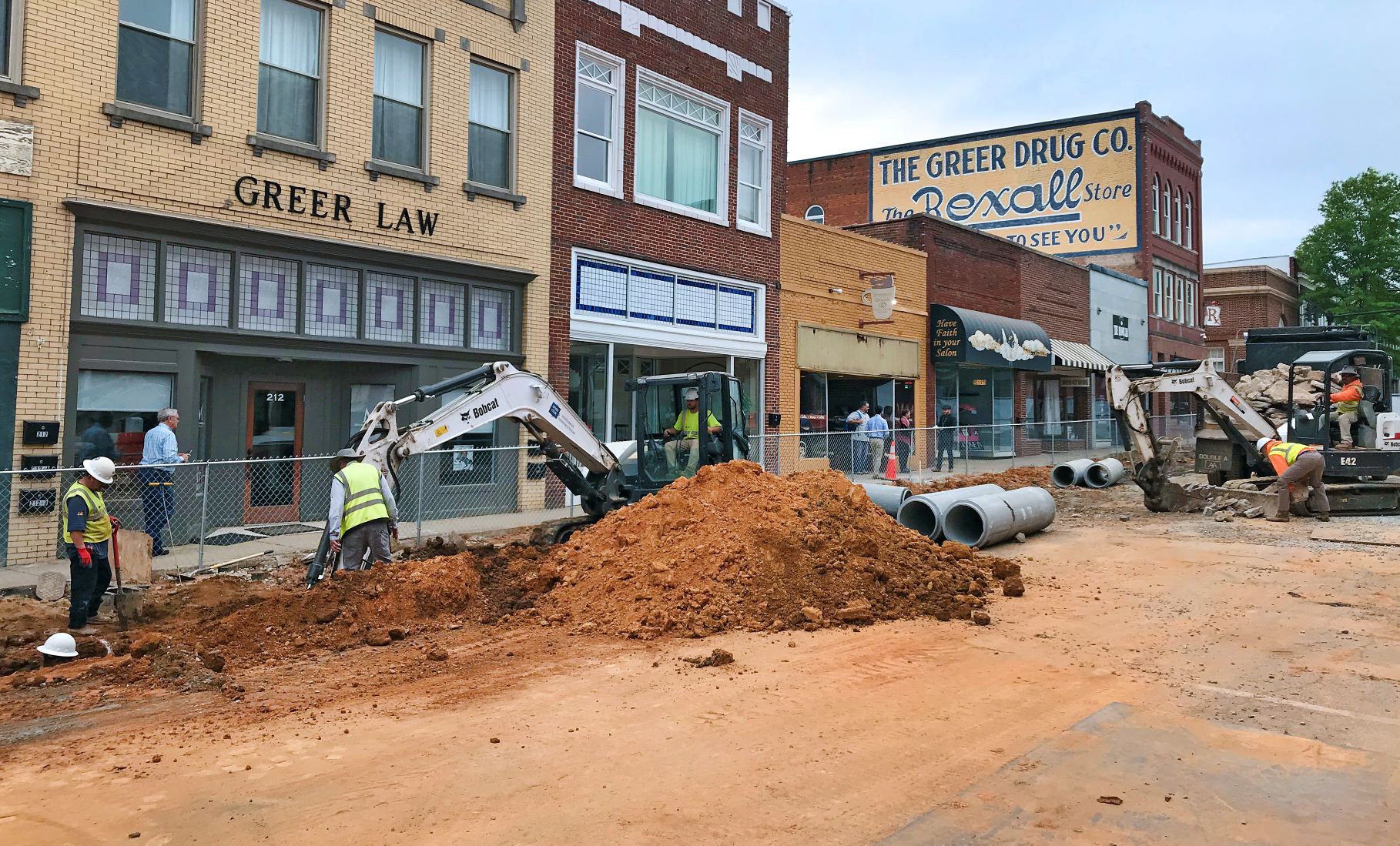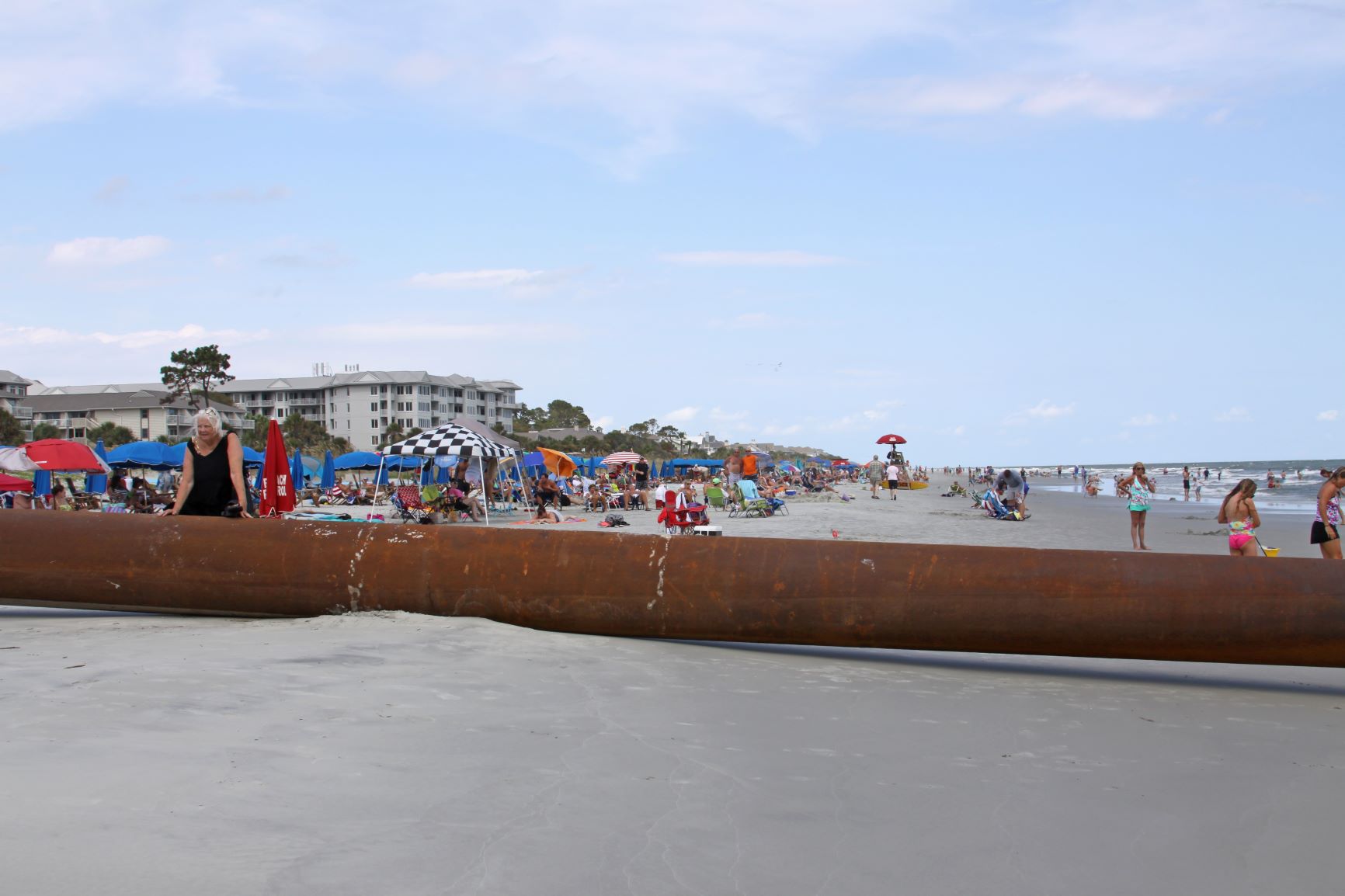Cities and towns rarely win people over with extensive infrastructure projects that require streets to be torn up, traffic rerouted and access to businesses restricted. However, some South Carolina cities that have taken on projects say that their efforts to keep the public and merchants informed has led to fewer complaints and even some excitement about the final product.
"Our mayor and council like to 'overcommunicate' with residents — and they specifically use that term 'overcommunicate,'" said Rachelle Moody, former assistant to the Cayce city manager.
This was just what the city needed as it took on a $29 million effort to replace three-quarters of its water infrastructure during a 20-month period. The effort won the city one of the Municipal Association's 2019 Achievement Awards.
"We were literally in the front yards of most of our residents," Moody said. "Because we would have such a large project going on, impacting so many of our residents, we knew that educating them upfront about what was going to happen was important as well as maintaining communication throughout the project to let residents know if we were going to be working in their area and also give them a clear line of communication to the city if they had comments, concerns or questions."
In the same way it contracted for the work of replacing water lines, meters, hydrants and even an elevated water storage tank, the city also contracted out its communications so city staff could continue its regular work.
Elected officials and the city engineer gave presentations at neighborhood meetings and other community events while every city staff member, including code enforcement and police officers, carried business cards to hand out when people asked about the project. The Waterline Replacement Project cards had contact information for customer complaints and questions. Contractors doing the water line work left door hangers notifying residents and businesses when work would begin in their areas and what to expect.
The city also decided to take on another project while it was tearing up the streets — safety improvements to the Knox Abbott Drive commercial corridor.
Most municipal projects of such size and scope are typically done over longer periods of time, but thanks to a low-interest State Revolving Fund loan, Cayce got it done all at once. While that created an almost chaotic level of moving parts, Moody said, it worked out better for the city and residents to get it all done at once.
Finding synergy
Creating a beautiful downtown will do little good if shops and restaurants go out of business in the 18 months it takes to complete the work.
That is the driving mission for the City of Greer and Greer Commission of Public Works during the ambitious $13 million downtown streetscaping project, called CenterG, which has already attracted a new hotel. The goal is to have businesses thrive, not just survive, during the construction work, said City Administrator Ed Driggers.

Downtown streetscaping may look like it's blocking access to businesses, but the CenterG
project in Greer is emphasizing communication on how to get into downtown during
the project and is providing parking lot shuttles. Photo: City of Greer.
"We took the approach that we had to do everything we could possibly do to inform and continue that communication about what we were doing, when and for how long, so businesses could decide for themselves how they would operate through this process," he said.
Work began in January 2019 and will wrap in July 2020. The goal is to create a more visually appealing and pedestrian friendly corridor on the main business artery, Trade Street.
The city is using many different channels to get its information to the public and to businesses, said Rosylin Weston of RAWeston Communications, who is working with the city on its communications during the project.
"We had to communicate that downtown Greer is very much open, that the merchants are open during this process and that was key to having those businesses thrive during this process," Weston said.
To that end, the construction team has worked with local businesses to help provide alternate routes for customers to access parking and businesses. Shuttles carry shoppers from more "remote" parking to downtown and riders can follow the shuttles via a smartphone app so they know when the shuttle will be where.
"They have exceeded my expectations professionally and personally," said Jennifer Jones, president and CEO of CBL State Savings Bank on Trade Street. "I have been surprised by the walkability of the area."
Jones said her bank had some issues with construction vehicles blocking the driveway, but those were quickly fixed and the construction crew provided the bank with signage to help reroute traffic to drive-through windows.
"We haven't had to spend a dime on anything [to communicate] to our customers because of the construction," Jones said. "For us, it has largely been business as usual."
CBL State Savings Bank, like several other downtown businesses, has also become something of an ambassador for the project, helping to spread official information provided by the city to customers asking questions.
The project has even become something of a spectator event, said Steve Owens, communications manager for the City of Greer, with one restaurant hosting a "hard-hat happy hour" for customers.
"Every time I am down there, I see groups of people watching the work," Owens said. "We went down to do a Facebook Live event, and there were people on the sidewalks. We met an 89-year-old gentleman who walked from his home a few blocks away. He worked at one of the department stores on Trade Street and he was just as excited as he could be."
Keeping the town's best asset open
Hilton Head Island found people were also excited to watch work on the refurbishment of its biggest asset — the beach. Every eight to 10 years, beach renourishment helps protect wildlife habitats and keeps natural erosion in check by dredging sand from the sea floor hundreds of yards off shore, piping it under the ocean and spraying it onto the beach. Heavy earthmoving equipment — complete with the annoying, but necessary, backup safety beeper — pushes it into place.

Many of the people most impacted by beach renourishment are tourists, and so the Town of Hilton Head Island provided project communication material to property owners and hotel managers so they could include it in confirmation emails. Photo: Town of Hilton Head Island.
The work goes on around the clock, weather permitting, typically blocking a 1,000-foot stretch of beach on any day.
"It was all about letting people know what to expect when they got here, and more importantly, with the beach being one of our top draws, that we were open for business," said Rene Phillips, website administrator for the Town of Hilton Head Island. "You don't want everybody canceling their vacation."
About a year before the first grain of sand was sprayed onto the beach, the town's communications staff partnered with the Hilton Head Island-Bluffton Chamber of Commerce and all of its members who were involved in seasonal rentals.
The town staff prepared a resource toolkit, including a video about beach renourishment and explained why it is done. The communications team provided nuggets of information that property and hotel managers could drop into confirmation emails to notify visitors of how to get more information. The communications project netted the town a Municipal Association Achievement Award in 2017.
Phillips said the variety of communication tools helped reduce the amount of complaints.
"You are always going to have that one or two people who aren't happy," Phillips said. "But one day, I went down to take some pictures, and people weren't facing the ocean, they were facing the work going on because they found that more interesting."
